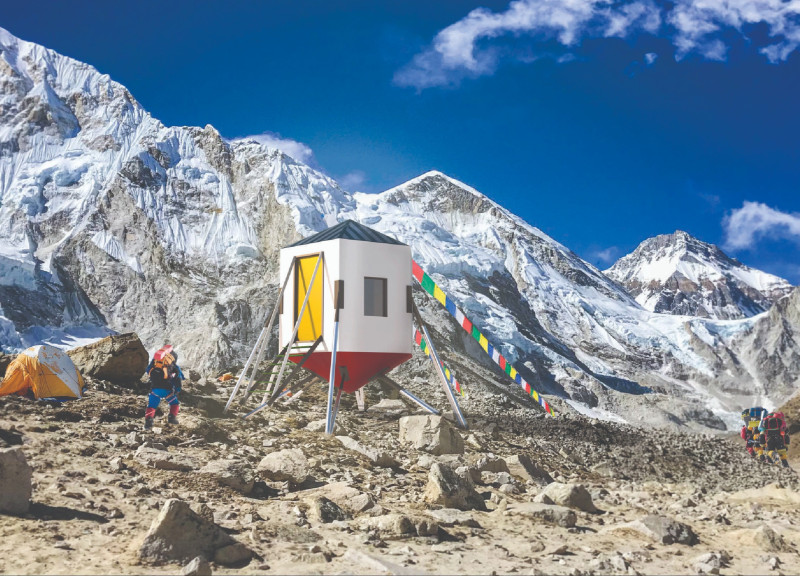5 key facts about this project
The design for toilet facilities on Mount Everest addresses the significant issue of waste management in high-altitude climbing. Situated in one of the most challenging environments, the facility serves climbers by promoting responsible waste practices while enhancing their experience on the mountain. The design concept focuses on modularity and practicality, creating a sustainable solution that can adapt to the specific conditions of Everest.
Design Concept
The facility uses prefabricated structural insulated panels as its primary building material. This choice allows for a lightweight and strong structure, essential for withstanding the harsh weather typical of the region. Each module rests on adjustable pedestals to accommodate the uneven terrain found in mountainous areas. This approach ensures the facility can be easily installed and reconfigured for different needs.
Waste Management System
At the heart of the design is a compost toilet system, which separates solid and liquid waste to prevent contamination. This method encourages climbers to manage their waste responsibly by using portable containers for liquid waste, promoting a culture of environmental care. The facility provides a hygienic and low-maintenance solution that aligns with the sustainability goals of the overall project.
Accessibility and User Comfort
The entrance includes a deployable stair mechanism that adapts to the varied elevation on Everest. This feature enhances accessibility while also using bright colors to improve visibility, especially in low-light conditions. The design also includes seating areas where climbers can rest and recover, catering to the physical and mental demands of climbing in such extreme conditions.
Energy Efficiency and Modularity
Solar panels on the roofs provide renewable energy, allowing the facility to operate sustainably during the climbing season. This design minimizes the environmental impact and reflects a commitment to reducing overall carbon emissions. The modular construction allows for quick assembly and disassembly, ensuring the facility can respond effectively to climbers' needs and the unpredictable natural conditions.
The project also incorporates storage solutions for emergency supplies and maintenance tools, enhancing the operational readiness of the facility. Attention to detail, such as proper ventilation and effective waste separation systems, demonstrates a focused effort on environmental responsibility and user engagement, resulting in a facility that is both practical and environmentally conscious.



















































